Reproduction of Common Milkweed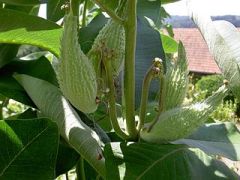
Similar to other plants, the seeds of Asclepias syriaca are
dispersed primarily by wind. Their white, hair-like structures as seen
in the pictures aid in this dispersal. The seeds can also float on
water. Seeds on a milkweed plant grow in pods, as seen in the images
below. The pods grow in place of the flowers after they fall off
(Thayer, 2006).
 http://commons.wikimedia.org/wiki/File:SeidenpflanzeSamenkapsel.jpg
http://commons.wikimedia.org/wiki/File:SeidenpflanzeSamenkapsel.jpg
Self-fertilization is one way that Asclepias syriaca
can reproduce. A study done in Canada estimated that 66
percent of all sexual reproduction of common milkweed was by means of
self-fertilization (Shore, 1993).
Self-fertilization would mean that no pollinator is needed, and the
plant is fertilized by its own seed. This method of reproduction
largely depends on the success of the female plants'
self-compatibility. When reproducing sexually but not by
self-fertilization, some factors that affect the success of
pollination are the time of day insects pollinate the flowers and
the sugar concentration in the nectar
(Morse,1994).
http://commons.wikimedia.org/wiki/File:Angiosperm_life_cycle_diagram.svg
Another possibility for sexual reproduction would be hybridization between multiple species of Asclepias. The first study done on hybridization between Asclepias syriaca and Asclepias sullivntii found that it is possible, but the offspring are infertile. However, they do still produce fruit and therefore provide food for organisms so are not a complete waste of energy and resources (Klips et al, 2004).
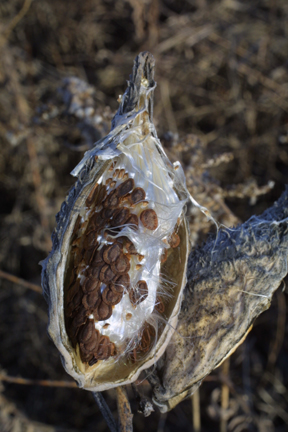
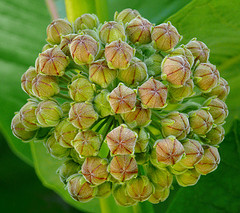
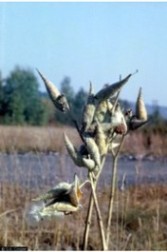
http://bioimages.vanderbilt.edu/metadata.
http://www.flickr.com/photos/jim-
http://plants.usda.gov/java/profile?
htm?baskauf/30737/metadata/img
sf/3825593239/in/photostream/
symbol=ASCLE&photoID=ascle_004_avp.tif
Besides reproducing by seed dispersal and fertilization,
milkweed can also grow asexually by
mitosis. As you read on the
habitat page, milkweed is a weed that
invades crops in the Midwest. One way it is so successful at doing
so is by "creeping, horizontal roots" that may spread to
make a single plant grow up to 10 feet across in one season (Anderson,
1999). Along the horizontal roots, buds are produced that will
grow into a new stalk. One milkweed plant can appear to be many
different plants because of this type of growth.
http://thecluelessgardeners.blogspot.com/2010/08/milkweed-roots.html
Go to the interactions page next, or return home.
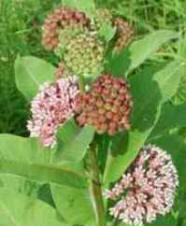
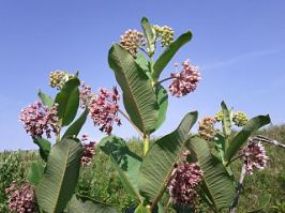 wikimedia
wikimedia